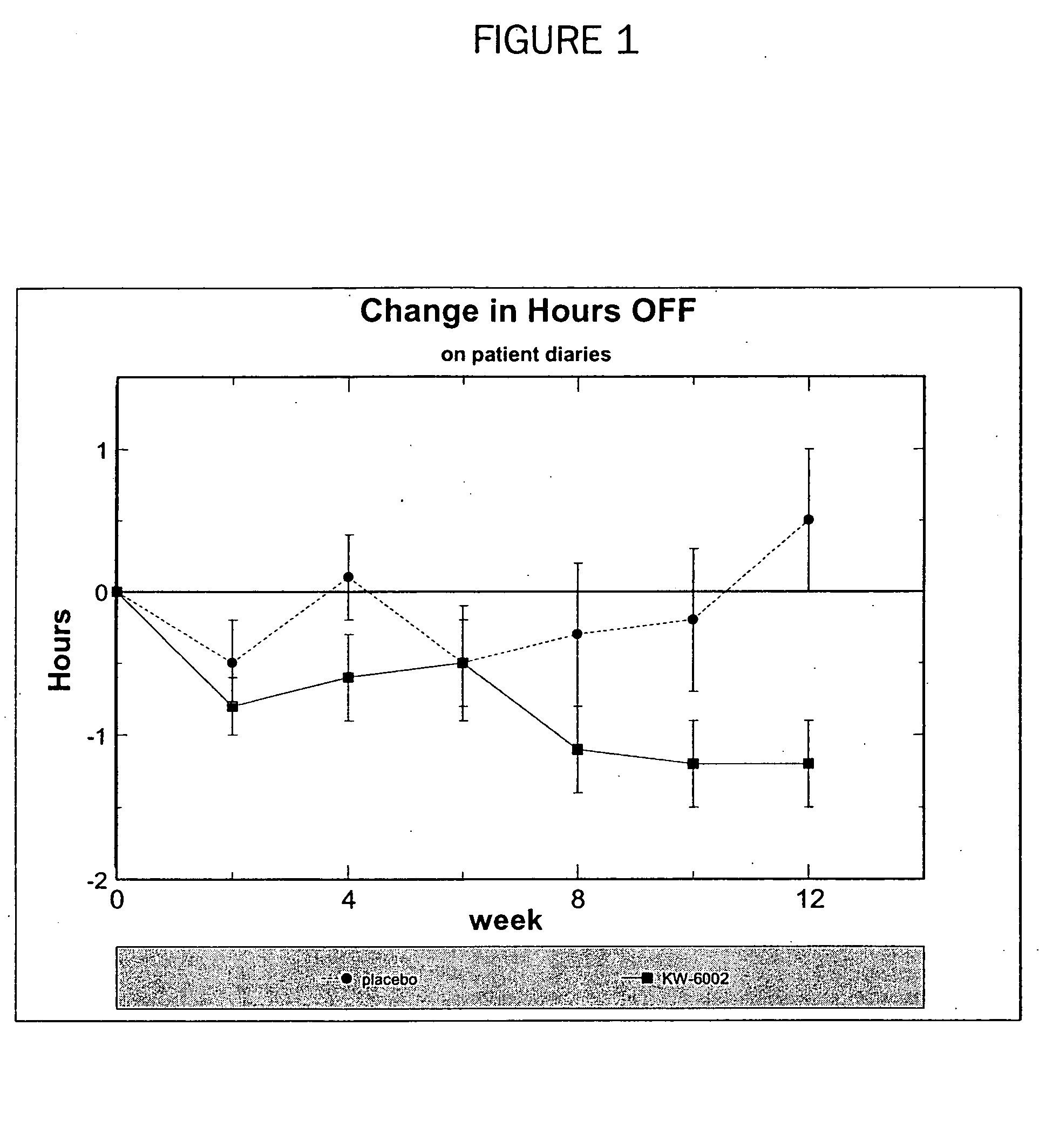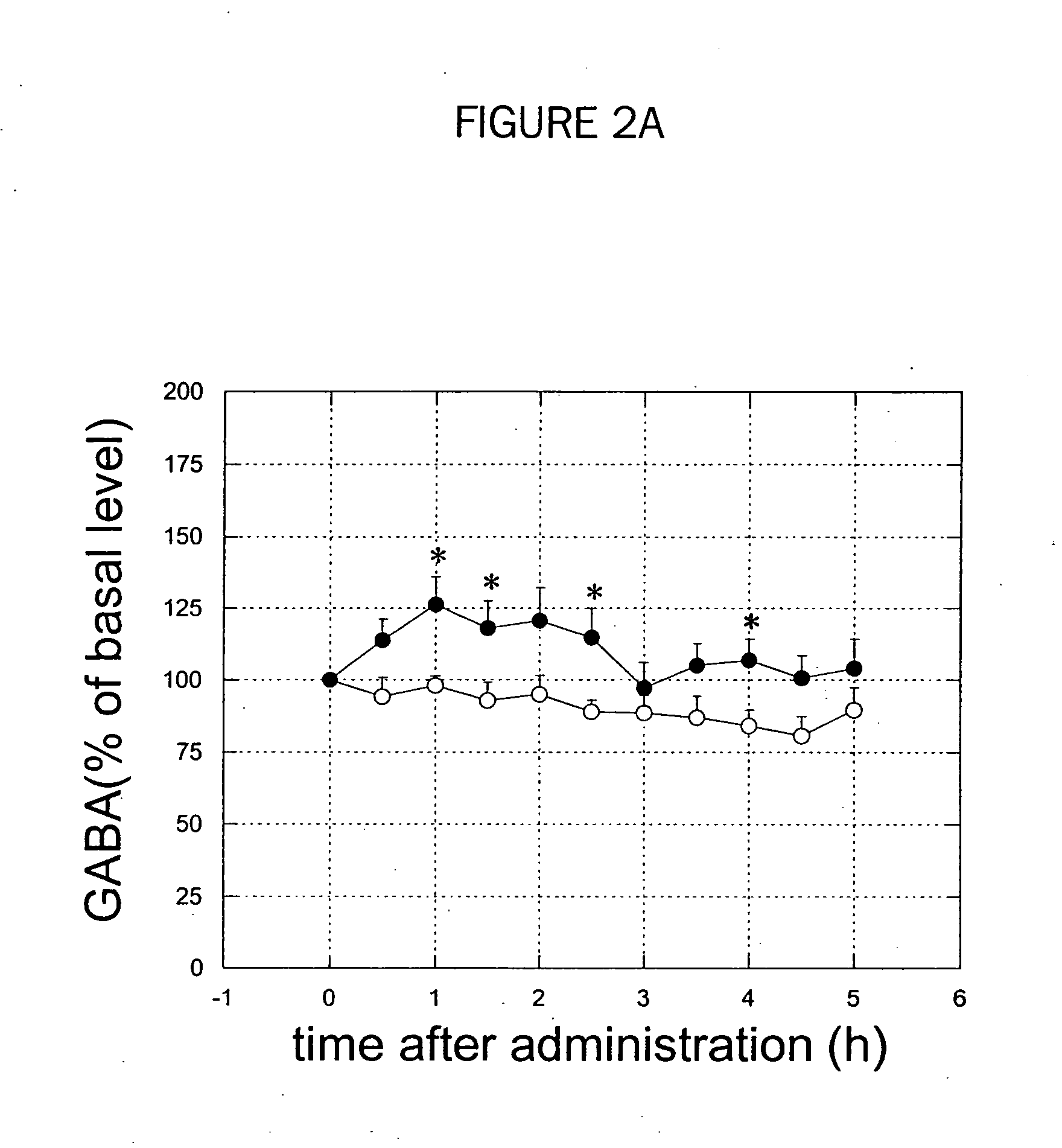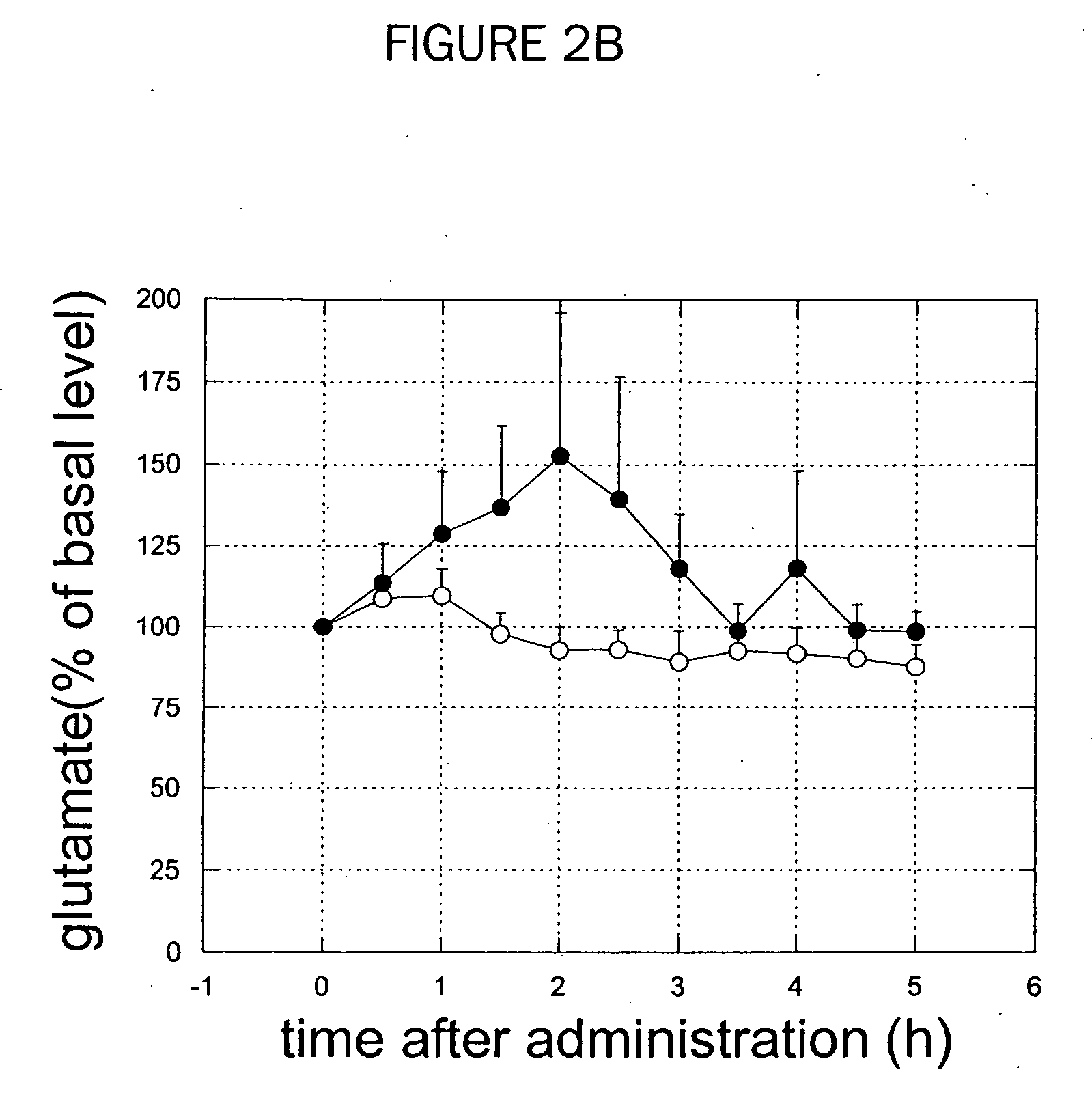Methods of treating patients suffering from movement disorders
a technology of adenosine a2a and a patient, applied in the field of adenosine a2a receptor antagonists, can solve the problems of compromising clinical response, affecting the treatment effect, and no known cure for parkinson's disease, so as to prevent the development prolong effective treatment, and prevent the onset of l-dopa motor complications
- Summary
- Abstract
- Description
- Claims
- Application Information
AI Technical Summary
Benefits of technology
Problems solved by technology
Method used
Image
Examples
example 1
[0244] The safety and efficacy of the adenosine A2A receptor antagonist KW-6002 as a treatment for Parkinson's disease complicated by L-DOPA-related motor complications was examined in a 12-week, multicenter, exploratory study. PD subjects with motor complications were randomly and blindly assigned to 1 of 3 parallel treatment arms: placebo (n=29); KW-6002 up to 20 mg / d (n=26); KW-6002 up to 40 mg / d (n=28). There were 2 primary efficacy measures: 1) change in “off” time as determined by the study investigator during 8-hour clinic visits and 2) change in “off” time as determined by subjects' home motor diaries.
[0245] Sixty-five of the 83 enrolled subjects completed the study; withdrawal rates were equally distributed across treatment arms. KW-6002 treatment was significantly more effective than placebo treatment in reducing the proportion of awake time that patients spent in an “off” state. As assessed by home diaries, subjects assigned to KW-6002 experienced a reduction in the prop...
example 2
[0267] Sixteen individuals with moderate to advanced Parkinson's disease consented to participate in this double-blind, placebo-controlled study. All were randomized to either KW-6002, or matching placebo capsules. The study employed a rising dose design (40 and 80 mg / day) lasting 6 weeks. Parkinsonism was rated on the UPDRS part III Motor Examination. All evaluations were videotaped for subsequent off-line scoring by a second, blinded rater.
[0268] KW-6002 alone or in combination with a steady-state intravenous infusion of each patient's optimal L-DOPA dose had no effect on Parkinsonian severity. At a threshold dose of infused L-DOPA, KW-6002 potentiated the antiparkinsonian response by 38% (p<0.05). No medically significant drug toxicity was observed.
[0269] KW-6002 in combination with a threshold dose of L-DOPA improved motor condition (rated using the UPDRS III Motor Examination scale) items as much as the optimal L-DOPA dose alone.
[0270] Thus, the present invention provides me...
example 3
[0275] GABA and glutamate concentrations in an output nucleus of basal ganglia, substantia nigra pars reticulata (SNr), are measured in the 6-hydroxydopamine lesion rats and the chronically L-DOPA-treated rats after 6-hydroxydopamine lesion. Effect of adenosine A2A receptor selective antagonists on GABA and glutamate levels in SNr and dyskinesias was examined.
[0276] Methods:
[0277] 6-hydroxydopamine (8 μg) was injected into the left medial forebrain bundle in a rat. One week after the lesion, the rats were then tested for contralateral turning by injecting apomorphine (0.1 mg / kg s.c.). Only those animals showing robust contralateral turning were used in subsequent experiments. Three days after the apomorphine tests, L-DOPA was administrated orally twice a day at a dose of 20 mg / kg for 1 to 3 weeks.
[0278] For qualification of L-DOPA induced dyskinesia, rats were observed individually to score severity scale of abnormal involuntary moments (AIM) including locomotive, axial, limb and...
PUM
| Property | Measurement | Unit |
|---|---|---|
| OFF time | aaaaa | aaaaa |
| OFF time | aaaaa | aaaaa |
| OFF time | aaaaa | aaaaa |
Abstract
Description
Claims
Application Information
 Login to View More
Login to View More - R&D
- Intellectual Property
- Life Sciences
- Materials
- Tech Scout
- Unparalleled Data Quality
- Higher Quality Content
- 60% Fewer Hallucinations
Browse by: Latest US Patents, China's latest patents, Technical Efficacy Thesaurus, Application Domain, Technology Topic, Popular Technical Reports.
© 2025 PatSnap. All rights reserved.Legal|Privacy policy|Modern Slavery Act Transparency Statement|Sitemap|About US| Contact US: help@patsnap.com



